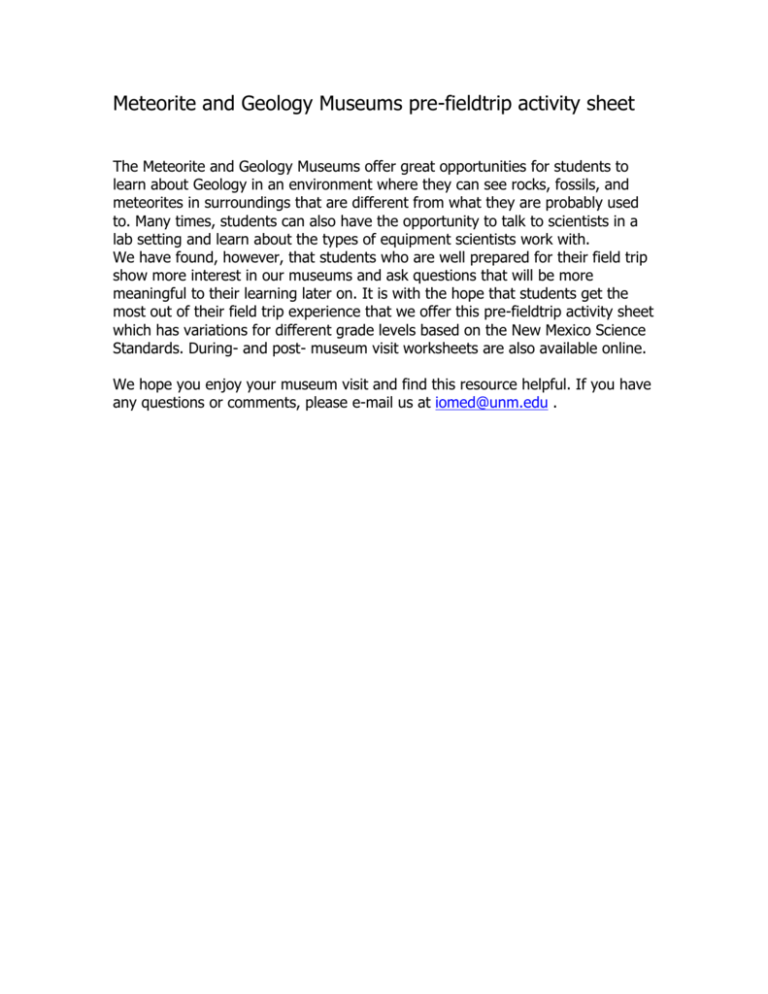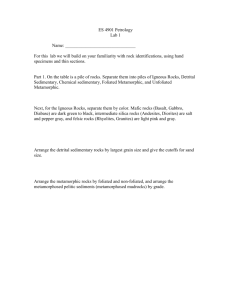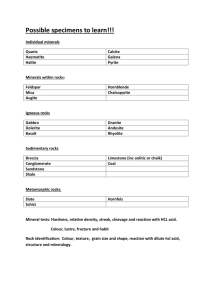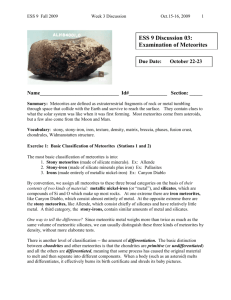Meteorite and Geology Museums pre
advertisement

Meteorite and Geology Museums pre-fieldtrip activity sheet The Meteorite and Geology Museums offer great opportunities for students to learn about Geology in an environment where they can see rocks, fossils, and meteorites in surroundings that are different from what they are probably used to. Many times, students can also have the opportunity to talk to scientists in a lab setting and learn about the types of equipment scientists work with. We have found, however, that students who are well prepared for their field trip show more interest in our museums and ask questions that will be more meaningful to their learning later on. It is with the hope that students get the most out of their field trip experience that we offer this pre-fieldtrip activity sheet which has variations for different grade levels based on the New Mexico Science Standards. During- and post- museum visit worksheets are also available online. We hope you enjoy your museum visit and find this resource helpful. If you have any questions or comments, please e-mail us at iomed@unm.edu . K-4 Pre – Museum Fieldtrip Worksheet Meteorite Museum 1. What types of objects can you see in the sky at night? _____________________________________________ 2. If you had a telescope, what types of objects could you see in the sky? ______________________________________________ 3. What types of objects can you see in the sky during the day? ______________________________________________ 4. What type of object does a meteorite come from? ______________________________________________ 5. How do we know that meteorites have landed on Earth? ______________________________________________ 6. Do all meteorites look the same? ______________________________________________ 7. What are some ways you can tell a meteorite from a regular Earth rock? ______________________________________________ Geology Museum 1. What is a mineral? _______________________________________________ 2. What is a rock? _______________________________________________ 3. What are the three major types of rocks? _______________________________________________ 4. How do large rocks become smaller rocks? _______________________________________________ 5. What forces in the Earth make igneous rocks? ____________________________________________ 6. How are sedimentary rocks made? ____________________________________________ 7. How are metamorphic rocks made? ____________________________________________ 8. What do you call someone who studies fossils? ____________________________________________ 9. What kinds of things can a fossil tell us? ____________________________________________ 10. What types of rocks can we find fossils in? ____________________________________________ Answers Meteorite Museum 1. Stars, the moon, planets, comets, meteors, satellites. 2. You would see more objects, and they would be clearer. You can see more stars, for example. 3. The Sun, sometimes the moon, a meteorite, or a planet. 4. Meteorites usually come from asteroids, but sometimes they can come from the moon or Mars. 5. We have seen them falling from the sky, and large meteorites leave craters, like the Barringer Crater in Arizona. 6. No, meteorites do not all look the same. 7. Meteorites can have thumbprint-like indentations called regmaglypts on them, some can have a thin black or brown coating called a fusion crust, you can often see shiny metal on a meteorite, meteorites can often be heavier than Earth rocks, magnets are attracted to the iron metal in meteorites, and some meteorites have little blobs of lighter mineral in them called chondrules. Geology Museum 1. A mineral is a natural solid formed through geological processes. Minerals have a chemical composition and a crystal structure. 2. A rock is a combination of two or more minerals and formed by geologic processes. 3. Sedimentary, igneous, metamorphic 4. Through weathering and breaking up of larger rocks. 5. Volcanoes and magma that hardens underneath the surface of the Earth. 6. Small rocks and minerals are deposited over many years and eventually become hard, turning into a large rock. 7. Metamorphic rocks are formed when igneous, sedimentary, or other metamorphic rocks are subjected to heat and/or pressure. 8. A paleontologist 9. What types of animals or plants lived at a certain time, where they lived, how long they lived, and what they may have looked like. 10. Sedimentary rocks. Rev 1, 11/04









